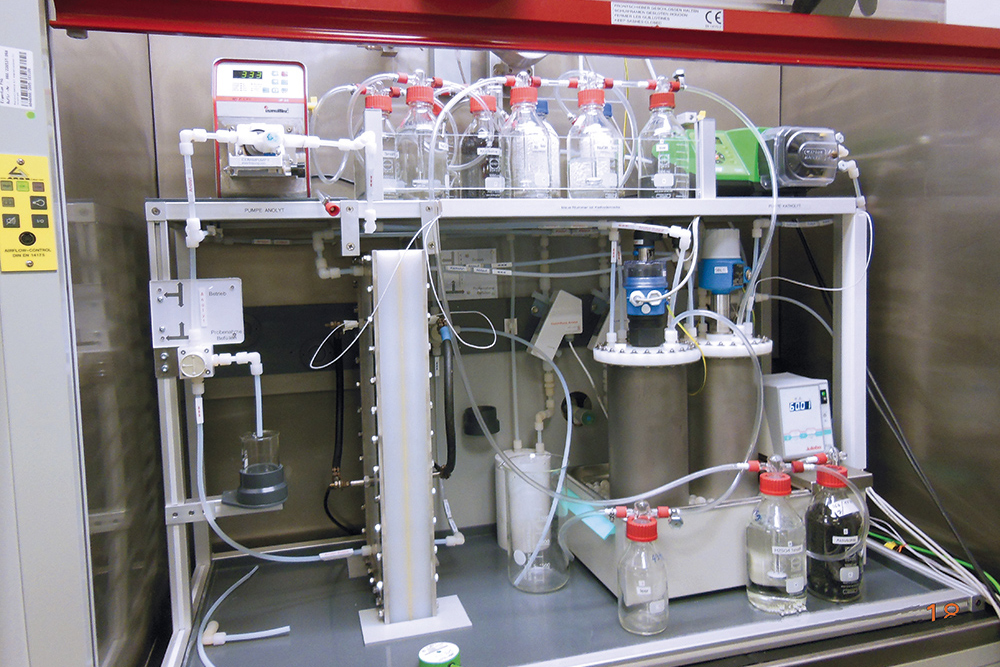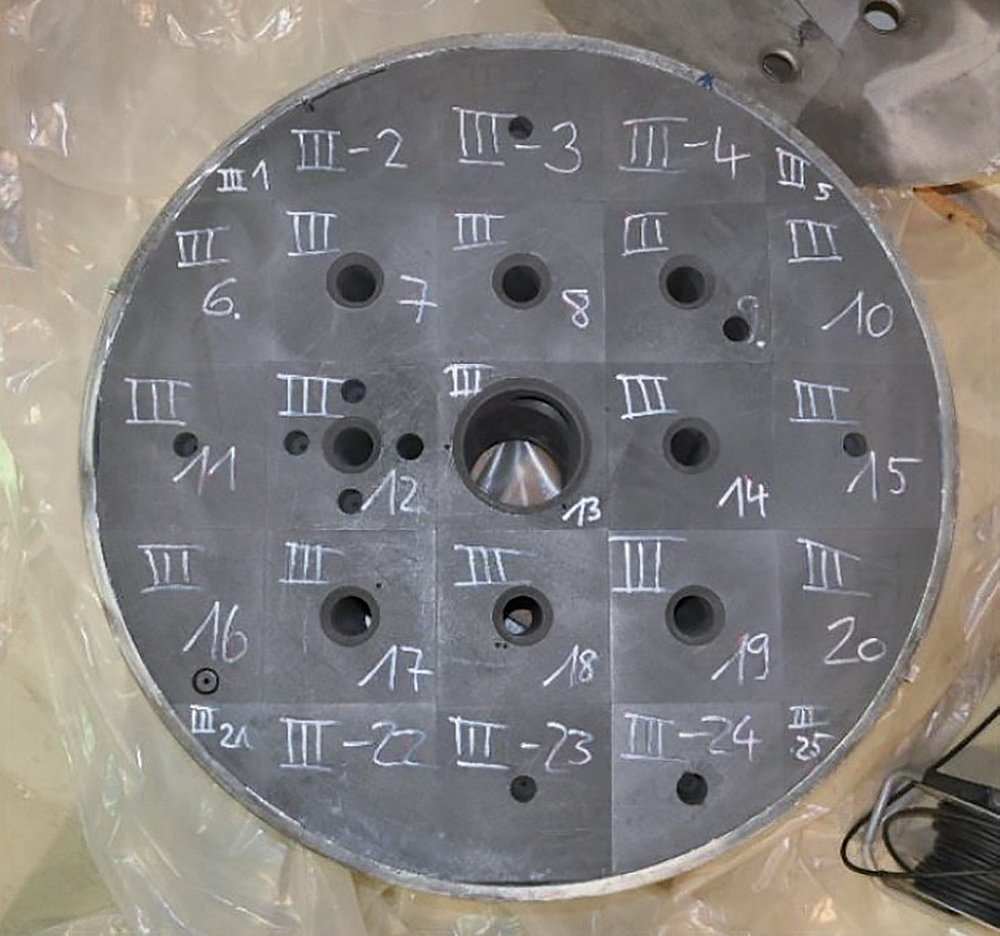

The decommissioning of nuclear installations in Germany is in full swing. This means large volumes of problematic residual materials have to be processed and kept safe within a rather short period of time. At present, however, appropriate treatment methods are not available for all types of such radioactive materials. Scientists at IKTS have developed approaches to tackle this challenge as part of projects funded by the German Ministry of Education and Research (BMBF). Fraunhofer IKTS runs its own radionuclide laboratory, it holds the legal permissions and employs trained and experienced staff, familiar with the very specific requirements in this field. Three promising methods for the treatment of radioactive waste are currently being investigated in the lab:
- Electrochemical total oxidation of liquid C-14-wastes
- Investigations of new conditioning routes for irradiated graphite
- Decontamination of radioactive concrete from the nuclear sector
Liquid C-14-containing wastes from the nuclear industry, but also from pharmaceutical research, are not approved for final disposal. The current state of the art for their treatment is traditional incineration – to the extent that this is even possible at all. With its electrochemical cold incineration process, IKTS has developed and tested a new route for the conditioning of such wastes which allows to fixate the carbon-14 as disposable C-14-CaCO3 and even opens up the possibility of C-14 recycling. The process has been tested for more than 2000 hours as part of bench-scale testing using a self-developed electrolyzer of the RODOSAN® type. Trials with real waste samples went off without complications and the treated solutions were completely decontaminated.
Thermal neutrons are able to cause nuclear fission of uranium. Reactor graphite is used in some reactors as a moderator for the deceleration of neurons. The irradiation near the reactor core leads to the formation of C-14 and other radionuclides in the graphite, making its disposal very difficult. That is why a solution to the “graphite problem” is essential with respect to creating final deposition capacities in Germany. Current research at Fraunhofer IKTS focuses on the separation of C-14 and other radionuclides from the graphite and their subsequent conditioning. To achieve this, electrochemical, thermal and biochemical approaches, as well as membrane processes (i.e. for isotope separation) are employed.
In case of radioactive concrete, the contamination is often bound only to the cement stone phase, which makes up only a small fraction of the total mass. Using a promising method, Fraunhofer IKTS is attempting to separate the non-contaminated aggregates by means of electrodynamic disintegration and subsequent water treatment.